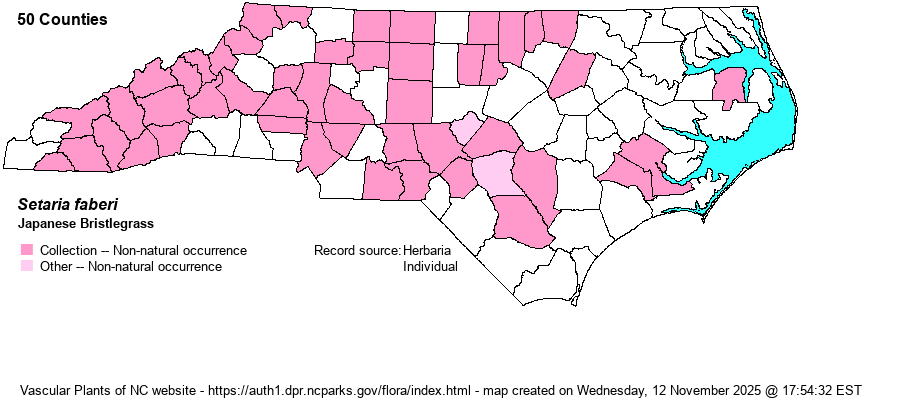| Author | R.A.W. Herrmann | |
| Distribution | Mostly the Mountains and Piedmont, scattered in the Sandhills and Coastal Plain. First collected in NC in 1956 in Nash and Vance counties. To be expected in every county.
Native of China; in N.A. mostly in the Midwest, but also eastward to the Atlantic Coast. | |
| Abundance | Frequent except uncommon to rare in the Sandhills and Coastal Plain. No doubt overlooked, as it usually occurs in crop fields, waste heaps, etc. | |
| Habitat | Crop fields, fallow fields, waste heaps, roadsides, pastures, garden weed, disturbed soils. | |
| Phenology | Flowering and fruiting July-October. | |
| Identification | Japanese Bristlegrass has a larger inflorescence than our other species, barring Giant Bristlegrass (S. magna), and its color is various shades of green (not yellow or whitish). More often than not the inflorescence arches over or even nods. | |
| Taxonomic Comments | The inflorescences of bristlegrasses look like bottlebrushes, due to the numerous bristles that stick out sideways or that angle upward. Two of our 3 native species are annuals; S. parviflora is perennial. When using keys, make sure to have mature fruiting plants and a dissecting scope to see such features as the surface texture on lemmas, number of bristles per spikelet, etc. | |
| Other Common Name(s) | | |
| State Rank | SE | |
| Global Rank | GNR | |
| State Status | | |
| US Status | | |
| USACE-agcp | UPL link |
| USACE-emp | UPL link |

